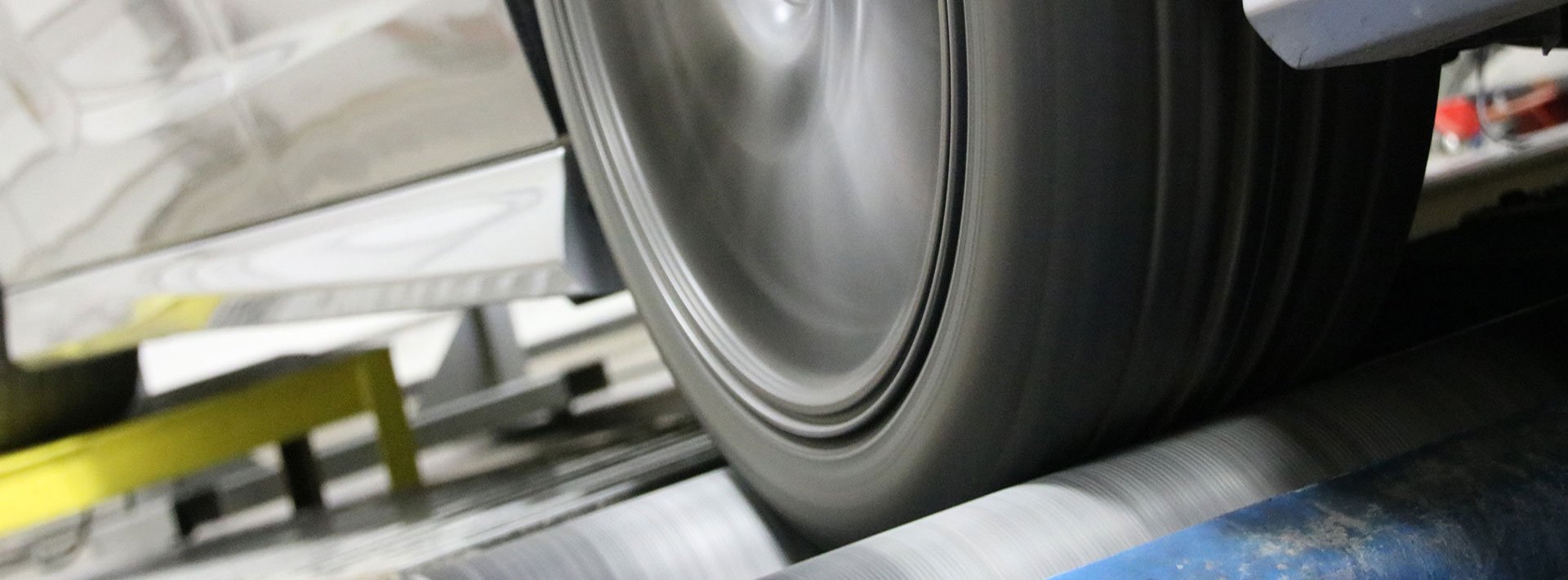DIN EN 14792 Wheel Paint Coating Adhesion Test
The DIN EN 14792 standard specifies a method for determining the adhesion of wheel paint coatings to the substrate. This is particularly important in the automotive industry, where reliable and durable wheel finishes contribute significantly to both aesthetic appeal and functional performance. The test involves preparing the wheels according to specified parameters, applying the coating, and then assessing the adhesion by subjecting it to defined mechanical forces.
The process begins with careful preparation of the wheel substrate, ensuring that any existing paint or contaminants are removed. This step is critical as even minor imperfections can compromise the integrity of the final coating. After cleaning, the wheels undergo thorough drying and priming if required by the standard. Once the surface meets the specified requirements, the coating is applied using a variety of techniques depending on the material being used.
The DIN EN 14792 test then proceeds with subjecting the coated wheel to a series of mechanical forces designed to simulate real-world conditions that may lead to paint failure. These tests often include abrasion resistance checks, impact resistance assessments, and immersion in various solvents or environments. By exposing the coating to these stressors, engineers can evaluate its durability and determine if it meets the necessary quality standards.
After undergoing this rigorous testing process, the results are analyzed according to the criteria outlined in DIN EN 14792. The assessment typically involves visual inspection combined with quantitative measurements of peeling or flaking areas. Compliance is judged based on predefined acceptance criteria which vary depending upon the specific application and client requirements.
This stringent quality control ensures that only wheels meeting high standards leave the production line, thereby enhancing overall product reliability and customer satisfaction within the automotive sector.
Benefits
Implementing DIN EN 14792 wheel paint coating adhesion tests offers numerous advantages to manufacturers operating in the automotive industry:
- Enhanced Durability: By ensuring that coatings adhere effectively, this process helps extend the operational life of wheels.
- Better Aesthetics: Reliable adherence reduces the risk of chipping or flaking, maintaining an attractive appearance over time.
- Increased Customer Satisfaction: Consistent quality leads to higher customer satisfaction and loyalty.
- Compliance with Regulations: Meeting regulatory requirements enhances your company's reputation and market credibility.
- Risk Management: Early identification of potential issues through thorough testing can save costly recalls later on.
- Competitive Advantage: Superior quality often translates into a competitive edge in the marketplace.
In summary, adhering to DIN EN 14792 not only improves product performance but also strengthens brand image and customer trust.
Eurolab Advantages
Eurolab offers comprehensive support for DIN EN 14792 wheel paint coating adhesion tests, providing clients with unique benefits:
- Expertise in Automotive Standards: Our team comprises experienced professionals who understand the nuances of automotive testing.
- State-of-the-Art Facilities: Equipped with advanced instruments and laboratories tailored specifically for wheel coating analysis.
- Customized Solutions: Tailored services to meet individual client needs, whether it be research and development or full-scale production.
- Comprehensive Reporting: Detailed reports that provide clear insights into test results and recommendations for improvements.
- Training Programs: Hands-on training sessions offered regularly to keep personnel updated on the latest testing techniques.
- Global Recognition: Our certifications are widely recognized across Europe, ensuring seamless international business transactions.
Partnering with Eurolab means leveraging our extensive experience and cutting-edge technology for your wheel coating projects.
Environmental and Sustainability Contributions
The implementation of DIN EN 14792 in the automotive industry has significant positive impacts on environmental sustainability:
- Promotes Durability: By enhancing the durability of wheel coatings, resources are conserved by reducing frequent replacements.
- Reduces Waste: Longer-lasting products mean less waste going into landfills and incinerators.
- Saves Energy: Reduced manufacturing cycles due to improved coating performance contribute to lower energy consumption.
- Increases Efficiency: More efficient use of materials translates directly into reduced costs and increased profitability for manufacturers.
- Promotes Recycling: Long-lived products are more easily recycled, thus contributing positively to recycling rates.
Adhering to DIN EN 14792 aligns with broader sustainability goals, making it a responsible choice for all stakeholders involved in the automotive supply chain.





